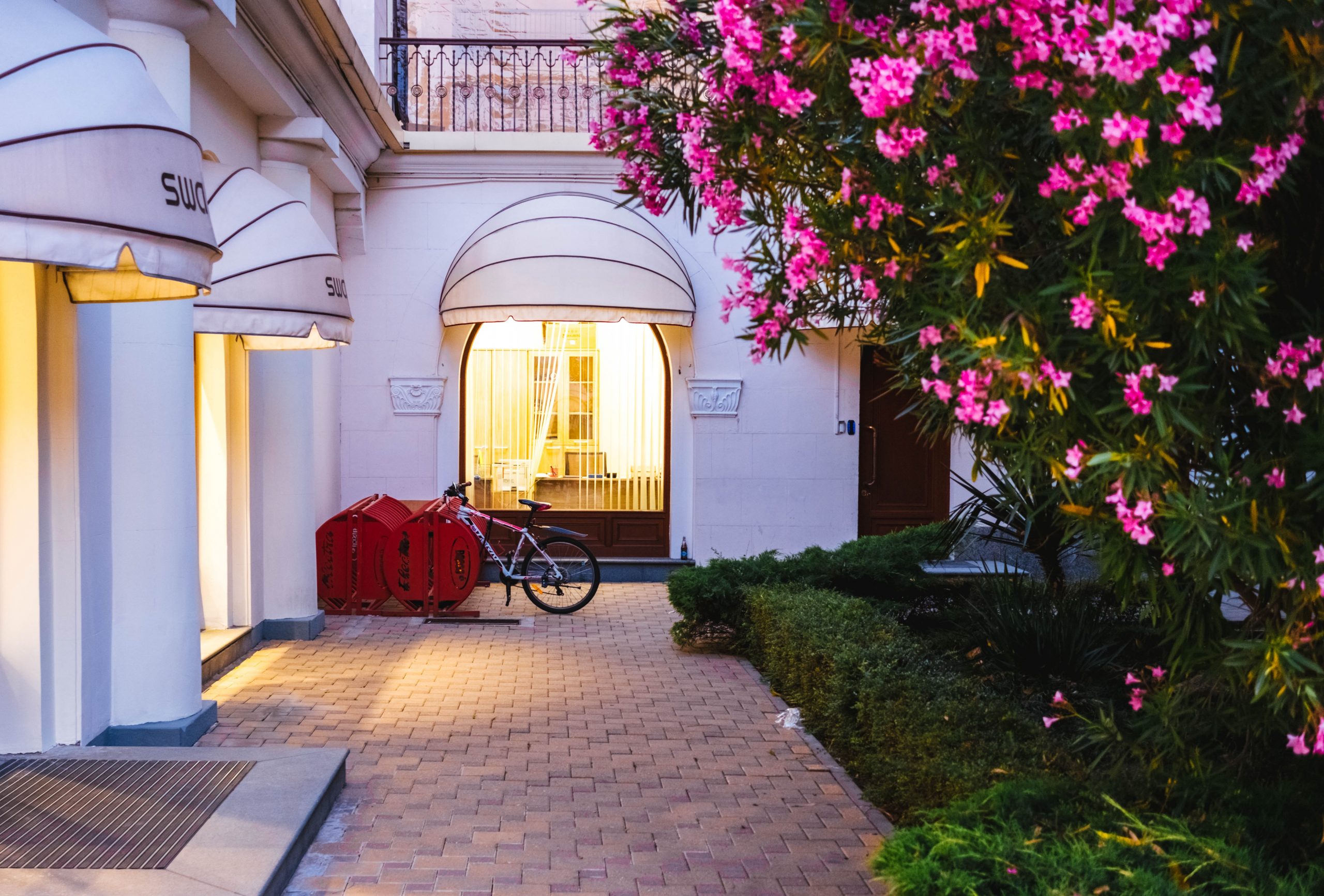Capitalizing influence: entrepreneurs transforming their success into solutions for global challenges
Success in the business world can be measured not only in terms of growth and profitability but also in terms of the positive impact generated for society. Many entrepreneurs have demonstrated that entrepreneurship and philanthropy can go hand in hand, leveraging resources, knowledge, and influence to advance causes that benefit millions of people. A RESPONSIBILITY OF BUSINESS LEADERS In the corporate environment, successful entrepreneurs have strong capabilities for innovation, attracting investment, and mobilizing resources. Consequently, entrepreneurs have a privileged opportunity to address issues and generate significant changes beyond their businesses. Therefore, the true transcendence of an entrepreneur lies in their financial success and the legacy that he or she leaves behind through their impact on society. TRANSFORMING BUSINESS SUCCESS INTO SOCIAL IMPACT Leaders such as Oprah Winfrey, Michael Bloomberg, and Jeff Bezos have taken philanthropy to another level, using their influence and wealth to drive high-impact initiatives. Oprah Winfrey: Beyond her media career, Oprah has built a business empire that she has put at the service of philanthropy. Through the Oprah Winfrey Charitable Foundation, she has supported initiatives in education, humanitarian aid to victims of disasters, and women's and children's empowerment, proving that business success can be a means to transform lives. Michael Bloomberg: The
Regenerative Tourism: Beyond Sustainability
In recent years, we have witnessed the rapid growth of tourism, positioning itself as one of the fastest-growing sectors, second only to technology, further boosted by the exponential advancement of artificial intelligence. As avid readers, we understand the economic impact of tourism and its crucial influence on sustainability. However, today I want to explore a type of tourism that is gaining increasing relevance: regenerative tourism. This approach goes beyond mere sustainability, aiming not only to mitigate environmental impact, but also to actively contribute to the restoration and improvement of the environment. Regenerative tourism is distinguished by activities designed not only to reduce the negative impact of conventional tourism, but also to enhance environmental resilience in the face of climate change. In response to current challenges in the tourism industry, this approach emerges as a necessary and responsible option. A prominent example of this model is The Good Concierge Project, featured on labuenahuella.org, highlighting Víctor Fernández Morales as Co-Founder and Project Director. Pula Golf Resort in Mallorca stands out as a leader in competitive regenerative hospitality. Since its establishment in 1996, the resort has been recognized for its commitment to Corporate Social Responsibility (CSR) and environmental policies. During the COVID-19 pandemic, it actively
The Current Dilemmas of the Gastronomic Sector
In the vast world of gastronomy, where flavors intertwine with experiences and opportunities, a challenging panorama emerges. From the influence of new policies to changing trends in consumption and the effects of climate change, enthusiasts in this sector must do more than just be prepared; they must adapt to consider new innovations that allow them to thrive amid constantly evolving challenges. Impact of Healthy Taxes and Single-Use Plastic In some countries, rather than merely requesting, the implementation of measures to promote sustainability, such as regulation on single-use plastic, has been demanded. This has led to a series of financial adjustments in the gastronomic sector, especially in countries like Colombia. Although these measures aim to promote more environmentally friendly practices, the reality is that even the smallest changes can have a significant impact on the operating costs of establishments. Faced with this panorama, entrepreneurs face the challenge of balancing the adoption of these measures with profitability, while also maintaining attractive prices for consumers. It is essential to develop strategies that allow compliance with regulations for a greener future, without compromising the economic viability of businesses. The Rise of Conscious Eating The current consumer trend has undergone a significant change, and the gastronomic sector is no
Recycling, waste management, and other initiatives for a more sustainable hotel industry
The hospitality industry is one of the largest and most prosperous in the world, generating approximately $7.7 trillion in global revenue in 2022. However, it is also one of the most polluting. A study published in Nature Climate Change estimates that the hospitality industry is responsible for 8% of global greenhouse gas emissions, while data from the World Tourism Organization (UNWTO) predicts that CO2 emissions from tourism will increase by at least 25% by 2030. Given the challenge posed by climate change and the responsibility that falls on renowned corporations and brands, it is my pleasure to address in this article the actions that major hotel chains are taking to reduce their environmental footprint. One of the primary sources of pollution in the hospitality industry is waste. Hotels, restaurants, and other tourism businesses generate significant amounts of waste, including paper, plastic, glass, and metal. This waste can have a detrimental impact on the environment, contributing to climate change, air and water pollution, and biodiversity loss. In this regard, in recent years the hospitality industry has begun to take measures to mitigate its environmental footprint, with a key strategy being recycling. A significant example is the commitment of the Hilton hotel chain, known for
Sustainable hotels that lead the ecotourism sector
As a nature lover and frequent traveler, I have always looked for ways to enjoy new experiences without leaving a negative footprint on the environment. So I'm excited to tell you about the sustainable hotels that are leading the ecotourism industry. These hotels are not only concerned with offering their guests an unforgettable experience, but are also committed to minimizing their impact on the environment. From choosing green building materials to implementing energy and water conservation practices, these hotels are leading the way towards more sustainable tourism. One of the hotels to recommend in this sense is the Hix Island House in Puerto Rico. This hotel features innovative architecture and uses solar panels to provide most of its power. In addition, they have implemented a rainwater harvesting system and have organic gardens that provide fresh and local ingredients for their restaurant. Another great example is Six Senses Laamu in the Maldives, which uses renewable energy and has a wastewater treatment system to reduce its environmental impact. In addition, the hotel is committed to eliminating single-use plastics in its facilities and works in collaboration with the local community to promote the conservation of coral reefs. In Colombia, there is the eco-friendly Casa del Agua hotel
Entrepreneurs who innovate with sargassum: a solution to climate change
Surely you are not the only one who has wondered what sargassum is, what causes it and how hotels and establishments fight against this plague that destroys the attractiveness of their beaches. On this occasion, I will talk to you precisely about it. Sargassum is a type of seaweed that floats on the surface of the oceans and is affecting the hotel industry and coastal ecosystems in Latin America and the Caribbean. According to Alejandro Olivera, representative of the Center for Biological Diversity of Mexico, the main causes of their proliferation are climate change and ocean pollution, which have increased the levels of nutrients and the temperature of ocean water, and have caused changes in the direction of the marine currents that carry the sargassum to the coasts. Despite the problems it causes, some companies and individuals are developing sustainable solutions to combat the presence of sargassum. For example, in Jamaica, a group of young entrepreneurs created the company Awganic Inputs to use sargassum for animal feed, while in Mexico, a group of students developed the "ËcoArte con Sargasso'' project to recycle sargassum and create biodegradable products. , such as ecological pots. These initiatives not only help combat the sargassum problem, but also






